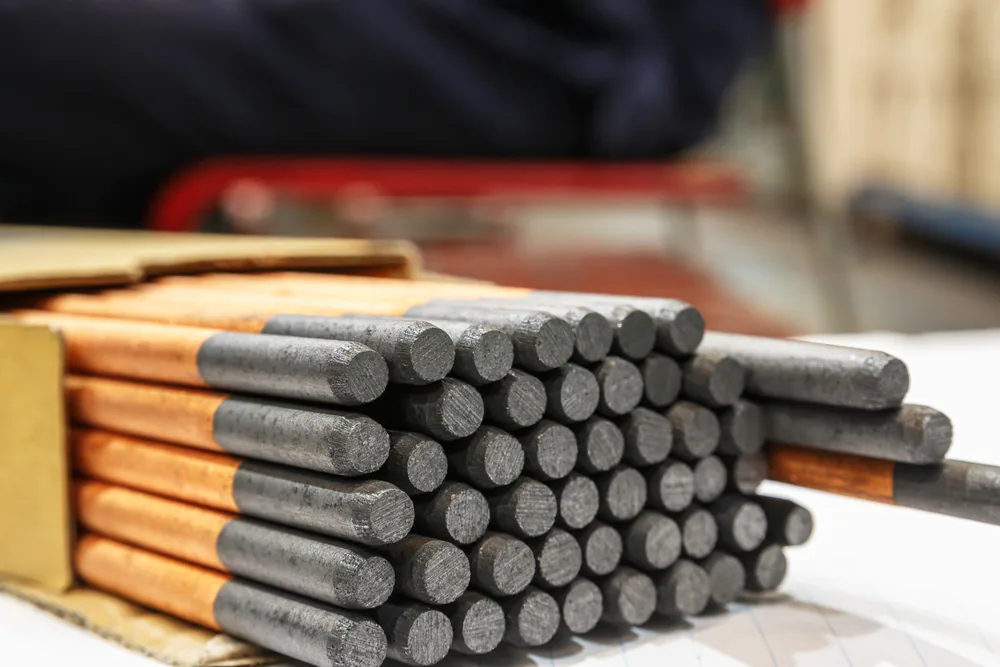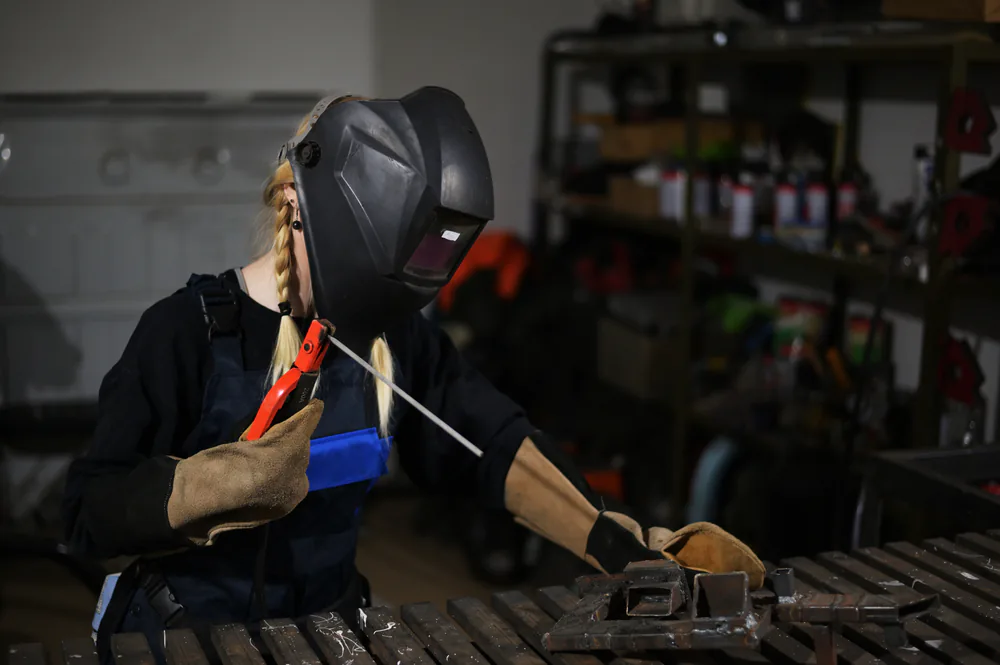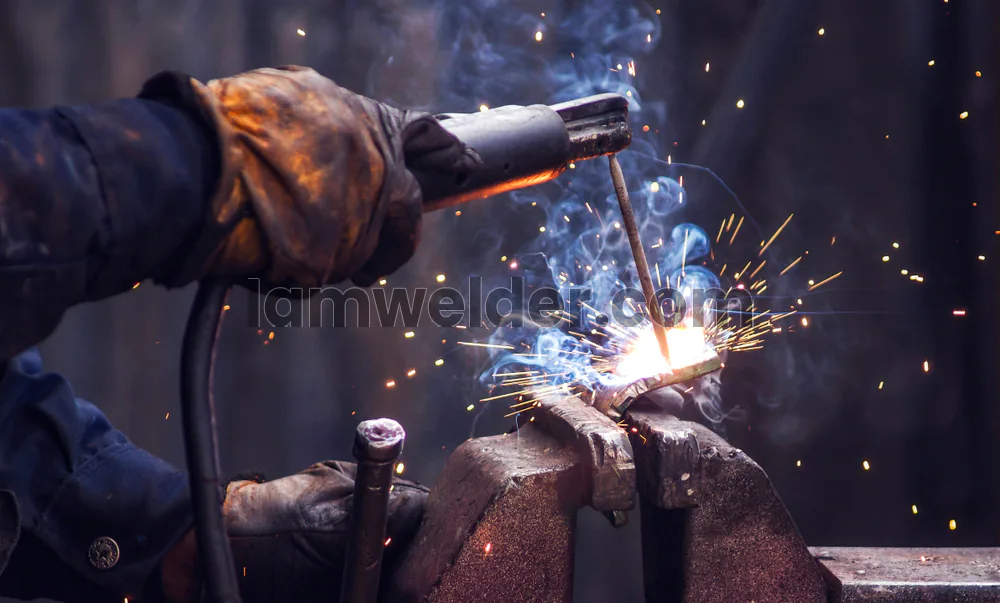Informational
Which is the Best Welding Rod for Pipe Fence?

When it comes to pipe fence welding, choosing the right type of rod is crucial. You don’t want to choose something that will melt the pipe or be difficult to work with. In this article, I will go over in detail which welding rods are best for pipe fencing.
E6010 and E6011 are two of the best options when it comes to pipe fence welding. They have very good penetration capability and position flexibility. E7018 is the third best option you have. The only difference is that 7018 produces stronger and cleaner welds than 6010 and 6011.
When welding pipe fences, you should only use these welding rods because they are the only ones designed for the job. Aside from these three possibilities, you should probably stay away from them. When it comes to repairing rusted or broken pipes, E6010 and E6011 are both excellent choices. But keep in mind that you can only thin metal with these rods. In the following paragraphs, I’ll provide further information regarding these rods.
3 Best Welding Rods for Pipe Fencing
Here are 3 best welding types that you can use for pipe fencing:
- E7018 Welding Rod
- E6010 Welding Rod
- E6011 Welding Rod
So let’s discuss these welding rods in detail.
1. E7018 Welding Rod
[table id=3 /]
It is an electrode with a low hydrogen content that may be used in any position on steels with low, medium, or high carbon content. Tensile strength is defined as 70,000 pounds per square inch. It is perfect for welding and tacking in out-of-position situations, particularly on pipes. AC or DCEP (reverse) polarity is required for operation.
This is not something that I would suggest doing with low-voltage AC welders. It has a diameter of 1/8 inch and weighs a total of 10 pounds. Its net weight is 10 pounds.
2. E6010 Welding Rod
[table id=5 /]
The E6010 is a cellulosic electrode that can be used in any position. It has an arc that begins quickly, remains steady, and penetrates deeply. Welds of x-ray grade may be produced in flat, horizontal, overhead, vertical-up, and vertical-down orientations thanks to this technology.
The pipe welding industry requested that E6010 be created specifically for their use, and it is now approved for welding API grades A25, A, B, and X42 pipe in addition to general structural construction.
3. E6011 Welding Rod
[table id=6 /]
The E6011 is another cellulosic electrode that is versatile in its application and can be used in any orientation. You can produce x-ray grade welds in a variety of orientations by using this rod, including flat, horizontal, overhead, vertical-up, and vertical-down welds.
In addition to its use in general structural construction, the E6011 welding wire, which was designed specifically for the process of welding pipe, is now approved for use in welding API grades A25, A, B, and X42 pipe.
Things You Should Consider When Selecting a Welding Rod for Pipe Fence
Depending on the state of the pipes as a whole, you can use different types of welding rods. Steel oil field pipes are the most common kind of pipe used in this industry. So I will be assuming you are also working with steel oil field pipes.
Here are a few things that you might wanna check before buying a welding rod:
- How much the rod penetrates the metal?
- What current type is required for the rod?
- What material is the rod made of?
- What is the tensile strength of the rod?
- In which positions it can be used?
So let’s look at all these criteria one by one:
1. Don’t use something that will blow through the metal
It goes without saying that we don’t want to use anything in any welding process that will blast holes in the metal, right? This thickness allows for enough degree of penetration inside the pipe without completely melting through. Anything that is more substantial may potentially melt its way through the pipes.
The use of welding rods with a thickness of 1/8 inch is recommended if you wish to weld a pipe fence without causing an excessive amount of penetration.
2. Current type of welder and rod should match
When working on a project, it is possible that the current that runs through the welder and the rod will not match. To get around that problem, selecting a welding rod that can be used with either alternating current or direct current is your best bet. In general, 7018 and 6011 rods have a strong reputation for their ability to sustain both kinds of currents.
3. Make sure the rod is made of the right material type
Not every single one of them is an excellent option for welding tubing for a fence because they are made of different types of material. Cast iron, high-carbon steel, mild steel, and a variety of hybrid alloys are some of the materials that may be used in the production of welding rods.
Mild steel is often thought of as the material of choice because of how simple it is to work with and how easily it can have its surface shaped.
4. Welding rod should be durable
The welding rod’s tensile strength provides insight into its overall durability. You need to give careful consideration to the tensile strength if you want to prevent any kind of fault or cracking from occurring.
For pipe fences, you should use welding rods with a tensile strength of at least 60,000 pounds per square inch (PSI) if you want the maximum possible strength. The first two digits of the welding rod show the rod’s tensile strength (I will explain this later in this article).
5. Make sure the rod is capable of all four welding positions
Depending on the job, you may want to work in different welding positions. A welding rod that can be positioned in any of the four accessible positions will be best suited for pipe fence welding.
Despite the fact that 6011, 6010, and 7018 all claim to support every position, the vertical down and above positions are difficult with 7018 welding rods.
The welding rod’s suitability for a given type of work will be determined by these 5 criteria. In the paragraphs that follow, we’ll go into more detail about this.
Welding Rods That You Need to Avoid for Pipe Fences?
There is a common mistake that most welders make. They often use 6013 rods when they should be using 6010 or 6011. 6013 is a great general-purpose welding rod that everyone uses but it’s not designed for welding pipes. Because the 6013 welding rod has more deep penetrations as compared to the 7028 and it can melt your pipe. And it doesn’t support DC- current type.
What do the numbers and letters on welding rods represent?
The American Welding Society (AWS) has a numbering system that provides information about a certain electrode, such as what use it is best suited for and how it should be handled for optimum performance. Have a look at the below table
[table id=7 /]
The “E” denotes an electrode for arc welding. The first two digits of a four-digit number and the first three digits of a five-digit number represent tensile strength. For instance, E7018 denotes a tensile strength of 70,000 pounds per square inch (PSI), and E6010 has a tensile strength of 60,000 PSI.
The position is indicated by the second last digit. Therefore, “1” stands for electrodes in every position, “2” for an electrode that is flat and horizontal, and “4” for an electrode that is flat, horizontal, vertically down, and above. The kind of coating and the welding current is indicated by the last two numbers. This is shown in the table above.
The below table will give you a more elaborated explanation of the codes
[table id=8 /]
In order to be an effective professional welder, you need to have a solid understanding of the many kinds of electrodes as well as the jobs that each of them is best suited for.
Welding procedures, welded materials, indoor vs outdoor environments, and welding locations are all important factors to take into consideration. You may improve your ability to choose the appropriate electrode for a given welding job by getting practice with a variety of welding guns and electrodes.
Conclusion
In the event that you are just getting started and don’t not much about welding rods, I believe that beginning with 6011 would be the greatest option for you. This particular kind of welding rod is the one that should be used for constructing pipe fences. The 6010 and the 7018 both have their applications, but they are more challenging to work with and have a wider range of restrictions.
Informational
How to Weld If You Have Long Hair? Pro Welder’s Tips

Any welding operation that you perform puts you and anyone else in the area in danger of a number of different things. As a result, it is completely reasonable for you to be concerned about preventing your hair from becoming entangled in any welding equipment and posing a threat to your health. In this article, I will talk about how you can safely weld if you have long hair.
If you want to weld while having long hair, a French braid is the best option for keeping your hair together. This will help you in tying your hair and hold it together behind your neck. The French braid should keep the hair compact and close to your head’s shape, and it also allows you to wear a welding helmet. As a result, you will be able to wear full safety equipment.
When you are dealing with hot weld spatters, having long hair can present a particularly difficult challenge. Therefore, if you are interested in learning more about how you can safely weld with long hair, continue reading the rest of this article, where I will discuss the topic in greater detail and share some helpful hints.
How Your Long Hair Can be an Issue While Welding?
Welding procedures, as I indicated earlier, expose the operator as well as anybody else in the vicinity of the workplace to a wide variety of risks. A project involving welding presents a number of potential dangers and threats; it is important that you be aware of these issues in order to protect not only yourself but also others around you. Especially when dealing with spatters, it is easy for things to go wrong if you have long hair.
Before we look at all of the tips you may weld with long hair, we need to first understand the potential risks you run and everything that might go wrong. Long hair poses a unique set of challenges when it comes to welding. A few are mentioned below:
- Spatters are your hair’s worst enemy.
- UV rays can permanently damage your hair.
- With long hair, grinders can cause serious accidents.
Let’s look at these problems one by one:
1. Take Spatters Seriously
The spatter, sparks, and heat generated by the arc provides the greatest challenge throughout the welding process since they may travel up to 35 feet and enter any nearby place. You will want to provide enough protection for your long hair if you are going to be in an atmosphere like this.
Not just your hair, but everything else that might catch fire should be kept at least 35 feet away from the welding location. In addition, a fire extinguisher should never be far away. In the event that a fire breaks out.
2. UV Rays Can Damage Your Hair Permanently
Molten metals, welding arcs, and ultraviolet radiation will be present in the work environment while welding is being done. The interaction of all these factors puts you at an increased risk of serious burns. The actual welding arc may reach temperatures of up to 10,000 degrees Fahrenheit, making it one of the hottest processes possible.
And believe me when I say that you do not want that welding arc to get anywhere near your hair. Your hair will suffer a significant amount of damage as a result, and it is possible that it could even be burned.
3. Grinder Can Give You Nightmares
The usage of grinders is another factor that may create issues for your lengthy hair. Using grinders and welding go hand in hand when working with metals. Therefore, if you are a welder, you will most likely make extensive use of the grinder. And grinders are really your worst enemy when it comes to your long hair.
When you’re working, you can find yourself crouching over a grinder, which can cause serious accidents if you don’t protect your hair properly.
Tips from a Pro Welder to Protect Your Long Hair When Welding
Now you know what the most obvious dangers that you have when welding with long hair. The next step is to tell you how you can keep yourself safe from those dangers.
Here are a few of the tips that you can consider:
- Braid your hair while welding
- Put your hair in a tight knot behind your neck
- Consider buying a welding cap
- You can use a bandana too if you are a bandana lover
Let’s discuss these tips one by one:

1. Braiding is the Best Option You Have
Welding hoods, helmets, or shields will provide the optimum amount of protection from any sparks, heat, UV rays, flash burns, or infrared light that may be present. They will protect not only your face and neck but also your eyes and hair. As a result, I feel that acquiring one is the best approach to protecting oneself.
Welding hoods are often made of cotton or leather and are rather light in weight and can go easily along with helmets. Make sure that whichever helmet you decide to purchase, is not too heavy and that it is comfortable to wear. It must also include a spatter barrier, the ability to be modified, a sensor bar, and the availability of replacement components.
2. You Can Simply Put Your Hair in a Tigh Knot
The most conventional and easiest technique for a welder operator to keep their long hair out of their face is to pull it back into a tight bun. Wrap an elastic band over your buns and secure them in place to prevent them from falling on your face.
If there are any unruly hairs, just use bobby pins to push them up and you should be OK. Anything that prevents your hair from falling on your face will suffice.
3. Consider Buying a Welding Cap
A welding cap is a good option if you want something that is both lightweight and comfortable. It must adequately shield your head from any hot metal, sparks, or splatters that may be present.
Not only they are effective in protecting your hair, but they are also made completely of cotton, making them incredibly breathable and also preventing sweat from pouring down your eyebrows while working.
4. Bandana is Another Option That You Can Use
Braids are not easy to create for everyone, and they may even be difficult to perform on a regular basis. If you don’t know how to braid my easiest suggestion would be to put a bandana over your head and tuck all of your hair within.
When welding, sparks will fly everywhere, and this will keep you safe. Make use of bobby pins or a bun to tuck in all of the ends. Bandanas aren’t my first choice for headgear. But it works. It’s a good option to have in case you don’t know how to braid your hair.
Few Other Safety Measures That You Need to Take
In addition to your hair, there are a few other parts of your body that need your attention. Some of these essential measures for ensuring your safety are listed below:
- Protect your eyes at all cost
- Always keep a fire extinguisher in your shop
- Wear protective clothing
- Make habit of using respirators
- Beware of leakages in your welding system
- Keep your welding space clean
Let’s discuss them one by one:
1. Protect your eyes at all cost
Be sure to always wear safety glasses in your workplace to protect your eyes from flying debris, which is often composed of metal. If you routinely do welding tasks, you will be exposed to a significant amount of flying debris.
You should make it a routine to put them on as soon as you come in the door; this will ensure that you are protected at all times.
2. Always keep a fire extinguisher in your shop
You shouldn’t be shocked if anything catches fire at some time during a welding operation because of all of the intense heat and sparks that are produced throughout the process. Because fires are a very real risk, you should always have an extinguisher on hand in case one breaks out.
3. Wear protective clothing
If you’ve ever imagined yourself beginning your first welding project in a pair of shorts, an old t-shirt, and a pair of flip-flops, you should rethink that idea. Wearing the necessary protective clothing at all times when welding is required if you wish to prevent injuries to your body, notably burns, that may be caused by the process.
4. Make habit of using respirators
You should always wear a respirator if you are going to be dealing with metals or any other materials that have the potential to emit harmful vapors.
Welding or cutting certain materials may produce a welding plume, which is a combination of hazardous gases, fumes, and smoke. This is not the type of thing you want to breathe in if you want to keep your lungs healthy and prevent respiratory issues.
5. Beware of leakages in your welding system
There is a good chance that you have pressurized containers in your welding shop that hold liquids or gases. Take extra precautions to check that none of those containers or the items that you are attaching to them have any leaks in them.
See my other article to know more about leakages and how to detect them.
6. Maintain your equipment
If you want to establish the safest possible working environment for your welding projects, you need to give your equipment a lot of TLC and make sure it’s in good operating order at all times. If your welding equipment and tools are in disrepair, an accident is almost waiting to happen every time you use them. However, the vast majority of incidents of this kind are avoidable if proper care is taken with the equipment.
Wrapping it Up
When it comes to welding, safety is the most important thing to keep in mind at all times. Because because welding involves a significant amount of fire and spatters, it is essential that you take a significant amount of precaution to protect your hair. I really hope that you’ll be able to keep your hair under control while welding thanks to the advice that’s been provided in this article.
Weld Types
Different Welding Methods: Applications of Each Method

Welding is joining two pieces of metal together by melting and cooling them until they become one piece. Welding processes include:
- Oxyacetylene welding
- Shielded metal arc welding (Stick)
- Gas tungsten arc welding (TIG)
- Gas metal arc welding (MIG)
- Flux-cored arc welding
- Torch or oxyfuel brazing
Some methods employ both heat and pressure, while others employ only heat. Welding is commonly used to construct automobiles, airplanes, and buildings. Other metal-cutting methods, such as oxy-acetylene and plasma arc cutting, use heat or electricity to cut through metal.
1. Oxyacetylene welding
Oxyacetylene welding (OAW) is a method of joining two pieces of metal using heat generated by the combustion of oxygen and acetylene gas.
Torch brazing (TB) is similar, but the metal is not completely melted. Instead, a special alloy is melted and used to join the two metal pieces.
Oxyfuel gas cutting (OFC) is a method of cutting metal that uses the same tools and gases as OAW and TB.
To generate heat and bond the metal, all of these methods employ a torch and special gases. They are frequently used on small or thin metal pieces.
Applications:
- Welding and brazing thin or small pieces of metal
- Welding and brazing dissimilar metals
- Cutting and piercing metal
Situations to Avoid:
- Welding thick or heavy sections of metal
- Welding high alloy or stainless steel
- Welding in high wind or outdoor conditions (due to the open flame)
- Welding in confined spaces (due to the production of harmful gases)
2. Shielded metal arc welding (Stick)
Shielded metal arc welding, or SMAW, is a way of welding metal together using an electrode that is coated with a special kind of flux.
The electrode melts and becomes a part of the welded metal. To do SMAW welding, you need a transformer, two welding cables, a work clamp, and an electrode holder.
There are many different types of electrodes you can use for SMAW welding, so you can choose the one that is best for your project. With SMAW welding, you can join different types and thicknesses of metal using the same machine.
Applications:
- Welding thick or heavy sections of metal
- Welding in outdoor conditions
- Welding in dirty or contaminated environments
- Welding on dirty or painted surfaces
Situations to Avoid:
- Welding thin or small pieces of metal (more suited for TIG welding)
- Welding high alloy or stainless steel (can affect the quality of the weld)
- Welding in confined spaces (due to the production of harmful gases)
- Welding in the presence of high winds (due to the electric arc)
3. Gas tungsten arc welding
GTAW, or gas tungsten arc welding, is a method of joining metal using a tungsten electrode. The tungsten electrode generates an electric arc, which melts the metal being welded as well as the end of the filler metal, which is manually applied.
Shielding gas is emitted from the welding gun to protect the molten weld metal from dirt and other contaminants. A foot or thumb switch can be added to the GTAW equipment to help the welder better control the welding.
GTAW welding produces very clean, high-quality welds, but it is slower and requires more skill than other welding methods. It is particularly useful for joining metal alloys that can only be joined with GTAW.
Applications:
- Welding thin or small pieces of metal
- Welding high alloy or stainless steel
- Welding in outdoor conditions (with proper shielding gas)
- Welding materials with high levels of contaminants or impurities
- Welding in high-precision environments
Situations to Avoid:
- Welding thick or heavy sections of metal (more suited for MIG welding)
- Welding in high production environments (slower process)
- Welding in confined spaces (due to the production of harmful gases)
- Welding in the presence of high winds (due to the electric arc)
4. Gas metal arc welding (MIG)
Mig welding is a type of arc welding that uses a continuously supplied wire electrode and gas to weld metal together.
It is becoming more popular because it is easier to learn than other types of welding, like stick and tig welding, and it is faster because you don’t have to stop and change the electrode as often.
Mig welding also creates less slag and spatter, which makes it more enjoyable to use and easier to clean up.
However, MIG welding equipment is more expensive and the MIG gun, which is the portable part of the equipment, can be difficult to use in small spaces. Mig welding also requires a shielding gas to work, so it is not as good for outdoor use.
Applications:
- Welding thick or heavy sections of metal
- Welding high alloy or stainless steel
- Welding in high-production environments
- Welding in outdoor conditions (with proper shielding gas)
Situations to Avoid:
- Welding thin or small pieces of metal (more suited for TIG welding)
- Welding in confined spaces (due to the production of harmful gases)
- Welding in the presence of high winds (due to the electric arc)
- Welding materials with high levels of contaminants or impurities (can affect the quality of the weld)
5. Flux-cored arc welding
Flux-cored arc welding, or FCAW, is a method of joining metal using a special type of electrode wire known as a flux core wire.
The wire is fed from a spool continuously through the welding equipment and out of the gun. The welding current flows through the equipment, melting the wire and the base metal.
Some flux core wires generate their own shielding gas as they melt, while others require the use of additional shielding gas. As the wire melts, it produces a gaseous cloud that shields the weld surface and removes impurities from the molten metal.
After the weld is completed, a layer of slag must be removed from the weld’s top. Despite this additional step, FCAW is a popular welding technique because it produces high-quality welds quickly and is very versatile.
FCAW equipment is similar to that used in gas metal arc welding (GMAW), and both methods are semiautomatic, which means that the wire is fed automatically but the welder moves the gun manually. Welding supply stores and other retailers stock FCAW equipment and filler metals.
Applications:
- Welding thick or heavy sections of metal
- Welding in outdoor conditions (with proper shielding gas)
- Welding in high-production environments
- Welding in dirty or contaminated environments
Situations to Avoid:
- Welding thin or small pieces of metal (more suited for TIG welding)
- Welding high alloy or stainless steel (can affect the quality of the weld)
- Welding in confined spaces (due to the production of harmful gases)
- Welding in the presence of high winds (due to the electric arc)
Comparison Table:
| Welding Process | Applications | Situations to Avoid |
|---|---|---|
| Oxyacetylene welding | Welding and brazing thin or small pieces of metal; welding and brazing dissimilar metals; cutting and piercing metal | Welding thick or heavy sections of metal; welding high alloy or stainless steel; welding in high wind or outdoor conditions; welding in confined spaces |
| Shielded metal arc welding (Stick) | Welding thick or heavy sections of metal; welding in outdoor conditions; welding in dirty or contaminated environments; welding on dirty or painted surfaces | Welding thin or small pieces of metal; welding high alloy or stainless steel; welding in confined spaces; welding in the presence of high winds |
| Gas tungsten arc welding (TIG) | Welding thin or small pieces of metal; welding high alloy or stainless steel; welding in outdoor conditions (with proper shielding gas); welding materials with high levels of contaminants or impurities; welding in high-precision environments | Welding thick or heavy sections of metal; welding in high production environments; welding in confined spaces; welding in the presence of high winds |
| Gas metal arc welding (MIG) | Welding thick or heavy sections of metal; welding in high production environments; welding in outdoor conditions; welding on dirty or painted surfaces | Welding thin or small pieces of metal; welding high alloy or stainless steel; welding in confined spaces; welding in the presence of high winds |
| Flux-cored arc welding | Welding thick or heavy sections of metal; welding in high production environments; welding in outdoor conditions; welding on dirty or painted surfaces | Welding thin or small pieces of metal; welding high alloy or stainless steel; welding in confined spaces; welding in the presence of high winds |














